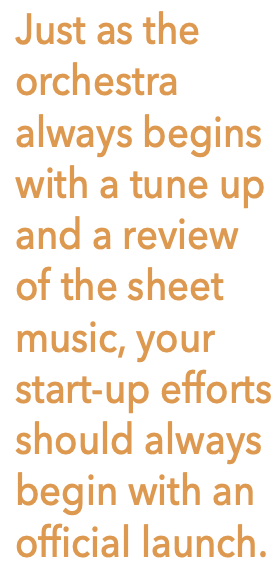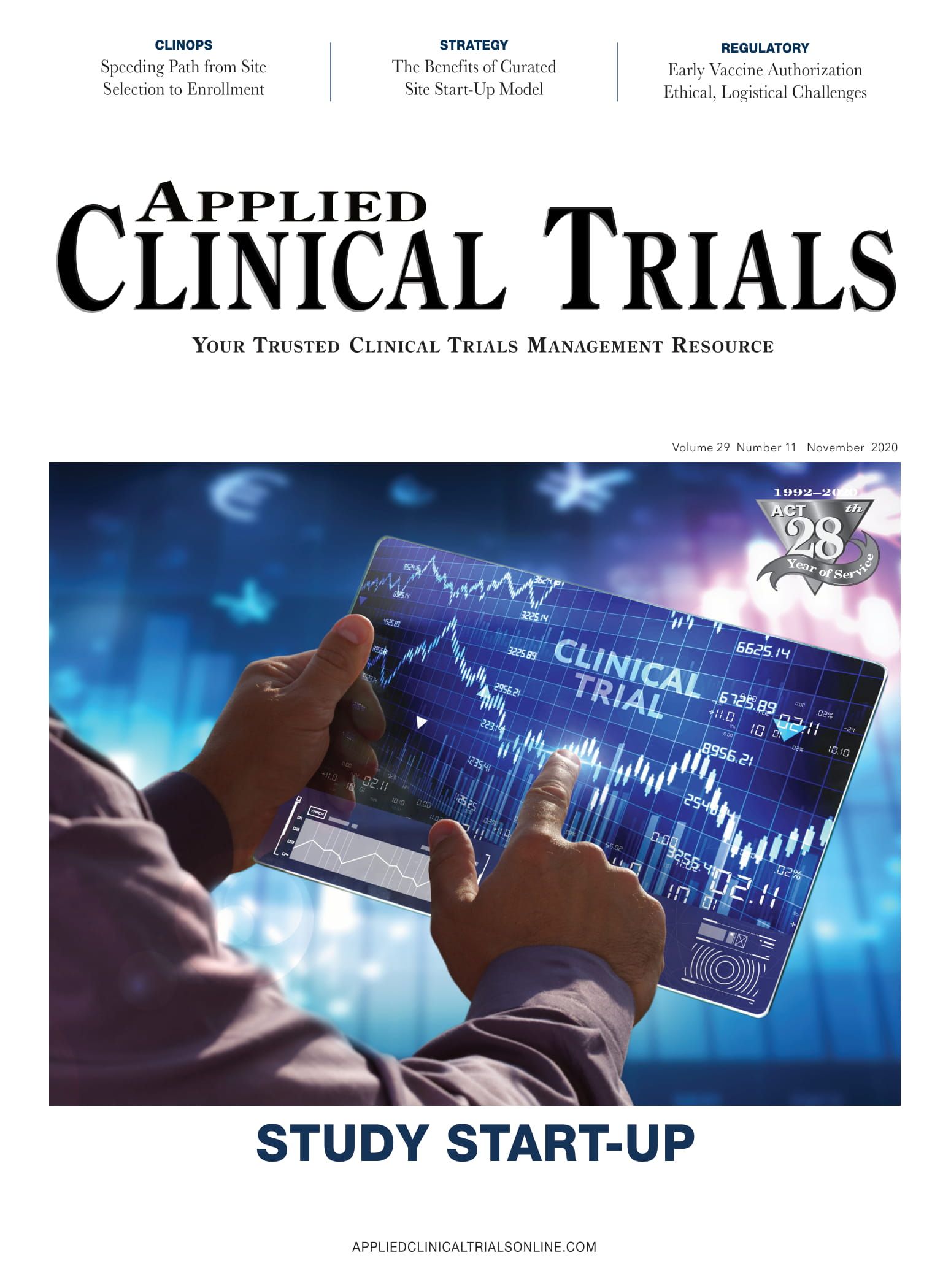Orchestrating Different Levels of a Successful Clinical Study Start-Up
Similar to a world-class symphony, a curated site start-up model can accentuate its individual components and lead to swift starts for clinical trials.
Scott Scarola

Drug developers and their partners are constantly seeking new and innovative ways to bring treatments to patients as quickly and cost efficiently as possible. While just a sliver of clinical trial operations, study start-up impacts multiple downstream factors like cost and timelines, which ultimately determine how quickly patients can have access to these treatments. However, study start-up can often be filled with preventable issues like unstructured accountability, mismanaged expectations about risk management, and distracting new technology that can complicate the process.
Alternatively, a successful start-up mobilizes a global cast of performers who rapidly identify and activate the best possible sites that have access to the most appropriate patient populations. This article explores best practices in start-up aimed at rapid, efficient delivery of this critical component of the clinical trial process.
Position teams for success
The site start-up process can best be described as conducting an orchestra. Depending on how well the musicians are coordinated, the orchestra may perform like a world-class symphony or like the first day of a primary school music class. In an orchestra, it is important to group the families of instruments and conduct them to play at specific points that best accentuate the music. This enables the instrument sections to understand their role in the symphony and how their sound blends with other instrument sections.
For study start-up, this starts with creating single points of accountability. With the ever-increasing complexity of studies, it is easy to fall into the trap of associating responsibilities for tasks across multiple teams and, as a consequence, diluting overall accountability. Although many individuals may be conducting activation tasks, it is critical to simplify lanes of communication and ownership by ensuring there is always a single point of ownership at the study and site levels.
At the study level, it is this individual’s responsibility to command the study start-up process and coordinate activation ramping, remove roadblocks, and align all the contributors to the activation process. This is important because at the study level it is already challenging to coordinate all these ancillary activities for every site across multiple countries, but it can quickly become confusing when the responsibility of these tasks is diluted across multiple teams.
Similarly, at the site level, it is equally important to have a single individual that has the accountability for ensuring all activities at the site are completed. Although many individuals may be conducting tasks to activate a site, one person should act as a partner who guides all site personnel through the complex activation processes and requirements. This is important because often roadblocks are site-specific, and one person should be the point of contact to address challenges.
Begin with the end in mind

In my experience, I’ve seen many teams defer start-up kick-off discussions until the protocol is final or after feasibility is conducted. Doing this puts your start-up team at a disadvantage because teams will focus on individual pieces, but most likely not have the full picture of the final outcome.
Don’t underestimate the value of a start-up launch meeting as soon as you are ready to begin work. Just as the orchestra always begins with a tune up and a review of the sheet music, your start-up efforts should always begin with an official launch. Use this as an opportunity to align on goals and milestones, highlight key decisions to make, ensure all of the team members understand expectations, and define what success looks like.
Use the same playbook
The myriad of technologies available to researchers is nothing short of amazing. However, it is important to remember that with each new system and application, it incrementally increases and complicates the cost, time, and effort it takes for sites and teams to deliver studies.
Invest in tools and technologies that bring multiple data sources together to give a holistic picture of the activation process to the teams tasked with delivering study start-up. In addition, look to minimize the number of tools and technologies your teams and sites use to find the information and data they need. Not only does this approach directly improve the efficiency of the start-up process, but, more importantly, it creates a single sheet of music that all of the teams can work from, resulting in a more timely and efficient approach to start-up.
Monitor and maintain the fidelity of the operations
If you’ve ever watched an orchestra perform, you have seen the conductor quickly identify and address instruments that have fallen out of tune or musicians that hit a wrong note. A keen conductor keeps an alert ear for any indicators that the piece may be going off track.
In this same way, it is critical that the conductors of start-up monitor objective risk criteria to quickly identify dimensions of the process that are not progressing as expected and have pathways and processes to succinctly articulate, escalate, and remove obstacles that may prevent activation to expectations. These characteristics include:
- Risk criteria: As you are monitoring the performance of your project, look to identify a minimal set of key indicators that demonstrate whether you are on track to deliver expectations. Risk criteria should be simple and objective, while also providing a good reference point on whether your operations are on track. Clear risk criteria minimize subjective opinions that could make you tone deaf to how your start-up is progressing.
- Risk management excellence: Create a culture that embraces root-cause assessment and mitigation recommendations paired with clearly articulated asks. Ensure teams understand that “red” is not a personal reflection of their performance, but rather highlight the urgency needed to resolve roadblocks.
- Escalation pathways: Design escalation pathways aimed at appropriate use of chain of command. Escalation should be a mechanism to gain endorsement and action to remove roadblocks, not a complaint or awareness forum.
Find your strategic partner
Many of the best musical works are defined by simple yet exquisite solos that take the piece to a whole new level. During the start-up process, this can be accomplished by forming the right partnerships with strategic research sites and service providers and looking for opportunities to leverage their strengths.
For example, strategic research sites are a critical component of maximizing start-up activation efficiency. Strategic research sites are ones where you have a strong operational relationship and the site consistently performs well on previous studies.
Creating operational relationships with these sites is critical to your study’s success as it brings mutual benefits through opportunities, operational synergies, and effective escalation pathways that remove roadblocks.
In addition, partnering with strategic service providers maximizes the efficiency of the activation process. Look to partner with service providers who understand your processes and bring tangible value. For example, PRA Health Sciences partnered with Advarra, a provider of institutional review board (IRB), institutional biosafety committee (IBC), and research quality and compliance consulting services in North America, to increase the number of sites relying on IRB review and streamline startup.
In less than two years, PRA was able to substantially improve the ratio of sites able to leverage the central IRB. In fact, as of May 2020, approximately 54% of sites were relying on Advarra as the central IRB and 37% relying on local IRBs (the remaining 9% were not tracked).
As a result, PRA was able to activate central IRB sites twice as fast as those sites only relying on local IRBs. Even sites that were required to have both central and local IRB review in the approval process were still faster than the local-only sites. This improved study startup timelines and saved money for PRA’s sponsor clients, ultimately speeding the drug development process and getting therapies to patients more quickly.
Quiet hero to your success
Study start-up has its challenges, but careful planning on how to manage accountability, outcomes, technology, expectations, and strategic partners can help structure the process into one that is rapid and efficient. While study start-up isn’t often viewed as the “star of the show,” it can be the quiet hero that leads your trial to the swift start it needs to deliver treatments to patients faster.
Scott Scarola, Executive Director, Global Study Start-Up, PRA Health Sciences
